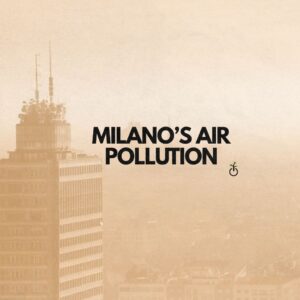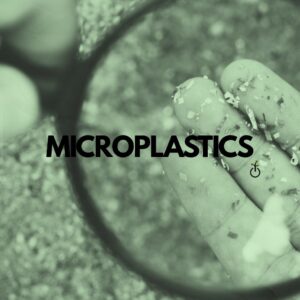A plastic continent is situated in the Pacific Garbage Area between Hawaii and California, spanning an area of 1.5 square km. This synthetic island of plastic, known as the Seventh Continent, serves as a stark reminder of the environmental crisis we face, and highlights humanity’s profound disregard for the environment.
The emergence of this artificial island, which has a geographical area three times larger than France, has resulted from multiple factors stemming from negligence and human activities. The accumulation of plastic waste that has eventually made its way into the ocean moves with ocean currents, in this case, the North Pacific Subtropical Gyre, and accumulates these plastic materials in a specific region.
A primary cause of ocean plastic pollution is single-use plastics. Their short-lived nature, combined with the slow natural degradation process of plastics, allows them to accumulate. As it is estimated that 80% of marine waste comes from land, improper disposal, alongside a lack of proper waste management, allows the plastic waste to find its way into waterways and eventually reach the ocean. Especially in the case of developing countries, with insufficient waste management systems, they lack the appropriate infrastructure for waste collection, recycling, and disposal, leading to a significant portion of plastic waste ending up in waterways.
Microplastics, tiny plastic particles less than 5 millimeters in size, are another significant contributor to the 7th Continent. They can result from the fragmentation of larger plastic or the disintegration of plastic debris over time due to natural processes or can be directly found in microbeads of personal care products. As they persist in the ocean for extended periods and have severe effects on marine life, they largely contribute to ocean plastic pollution by transporting pollutants, and marine life can confuse them for food.
The fishing industry contributes to the problem through the loss or abandonment of fishing gear and the release of plastic materials used in fishing activities. Nets, lines, and other gear are often made of durable plastic materials and can persist in the ocean, trapping marine life and breaking down into smaller plastic particles. Ghost gear contributes to the overall accumulation of plastic debris in the 7th continent.
Another major human-induced cause of ocean plastic pollution occurs through trade and its practices. Firstly, global trade and shipping in the globalization era have greatly increased in magnitude. With the global movement of goods, there are sometimes potential accidental spillages and improper disposal of materials, directly dumping waste into the ocean. Unlike microplastics, which are very small in size, trade-related activities can introduce a vast amount of plastic waste all at once. Additionally, littering and illegal dumping include other actions contributing to ocean pollution and the 7th continent through their improper discard.
Charles Moore was the first to sound the alarm about what would later be known as the “Seventh Continent” or Great Pacific Garbage Patch. In 1997, he participated in a competition that took place in the Pacific Ocean, spanning from Los Angeles to Hawaii. While passing through an area seldom traversed by sailors, Moore and his team encountered an enormous vortex of translucent debris suspended in the water. The vortex was so vast that it took them several days to traverse. This plastic vortex is equivalent in size to approximately one-third of the United States. However, the term “Seventh Continent” can be misleading, as it conjures an image of a compact mass of plastic waste resembling a landmass. In reality, it more closely resembles a “plastic soup” made up of countless microplastics measuring less than 5 millimeters in diameter, which float in suspension from the surface down to depths of 30 meters or more. Surface concentrations of plastic waste in subtropical gyres range from 200,000 to 600,000 pieces per square kilometer, and this pollution extends over millions of square kilometers.
The rotation of the Earth, the geometry of the ocean basins, and the direction of winds combine to create an oceanic circulation pattern known as “ocean gyres.” These gyres are characterized by large-scale flow trajectories and serve as collection areas for plastic waste. The stagnant waters and converging ocean currents in these areas cause plastic debris to accumulate. While the largest plastic gyre is currently located in the North Pacific Ocean, spanning nearly 3.5 million square kilometers, similar waste vortexes exist in the other four major global ocean gyres: the North and South Atlantic, the South Pacific, and the Indian Ocean.
Plastic pollution has far-reaching and severe consequences. One of the most visible impacts is the ingestion, suffocation, and entanglement of numerous marine species. Seabirds, whales, fish, and turtles mistakenly consume plastic waste, leading to starvation as their stomachs become filled with non-nutritious materials. These animals also suffer from lacerations, infections, impaired swimming abilities, and internal injuries. Shockingly, 17% of the species affected by plastic pollution in the ocean are listed as threatened on the International Union for Conservation of Nature Red List.
However, the problems associated with plastic pollution extend beyond the direct harm to marine life. Many organisms, including potentially invasive species, attach themselves to plastics and are carried by ocean currents for thousands of kilometers over several decades. This poses a significant threat to the balance of ecosystems. Moreover, the accumulation of marine debris can have adverse effects on human health. Numerous chemicals used in plastic production are known to be carcinogenic and disrupt the endocrine system, leading to developmental, reproductive, neurological, and immune disorders in both humans and wildlife. These microscopic plastic particles enter our bodies through the food chain. For instance, a study conducted by Greenpeace and Incheon National University in South Korea in 2018 found that 90% of sampled salt brands worldwide contained microplastics.
The discovery of the Great Pacific Garbage Patch has raised awareness among thousands of people and spurred multiple initiatives to reduce plastic pollution in the ocean. However, retrieving plastic from the ocean once it has entered is a challenging task. While new technologies enable the capture of larger marine debris, small plastic items and microplastics are virtually impossible to retrieve, particularly when they are deep in the ocean. Therefore, many scientists argue that the most effective solution is to reduce plastic waste overall and prevent its entry into rivers and seas in the first place.
Several solutions have been developed to tackle the issue of plastic entering the seas. One notable example is “The Ocean Cleanup,” a Dutch company that has designed a massive floating boom to extract plastic waste from the Great Pacific Garbage Patch. This innovative technology aims to actively remove plastic debris from the ocean. In addition, researchers at a university in the Chinese port city of Xiamen are working on a camera surveillance system that can identify plastic and predict its downstream trajectory. This system enables timely intervention to prevent plastic from reaching the ocean. By identifying and tracking plastic waste, interventions can be implemented more effectively. The European Space Agency is also contributing to the fight against plastic pollution by utilizing satellites to monitor and track plastic waste from space. This data can inform the development of new policies and strategies to mitigate plastic pollution and protect marine environments. Advancements in the development of biodegradable plastics hold great potential for improving ocean health. Scientists are actively researching and developing bioplastics that degrade in seawater. If successful, this innovation could significantly reduce the accumulation of plastic waste in marine environments, as these biodegradable plastics would naturally break down over time.
These solutions and technological advancements demonstrate the collective efforts being made to address the problem of plastic pollution in our oceans. By combining innovative cleanup technologies, surveillance systems, satellite monitoring, and sustainable material alternatives, we can work towards a cleaner and healthier marine ecosystem.
Addressing the global issue of the “7th continent of plastic” requires a comprehensive approach that includes reducing plastic consumption, improving waste management practices, promoting recycling, and developing technologies to remove existing plastic debris from the oceans. International cooperation is crucial to effectively tackle this global environmental challenge and coordinate the vast amount of efforts needed to halt plastic accumulation and initiate the cleanup process.


By: Eva Michael and Lucie Windels
Sources :
https://www.brusselstimes.com/464131/pacific-plastic-continent-so-big-that-it-developed-marine-life https://www.europarl.europa.eu/news/en/headlines/society/20181005STO15110/plastic-in-the-ocean-the-facts-effects-and-new-eu-rules https://www.iberdrola.com/sustainability/plastic-island-in-pacific-eighth-continent#:~:text=The%20origins%20of%20the%20Great,is%20also%20a%20big%20culprit. https://www.encyclopedie-environnement.org/en/water/plastic-pollution-at-sea-seventh-continent/




